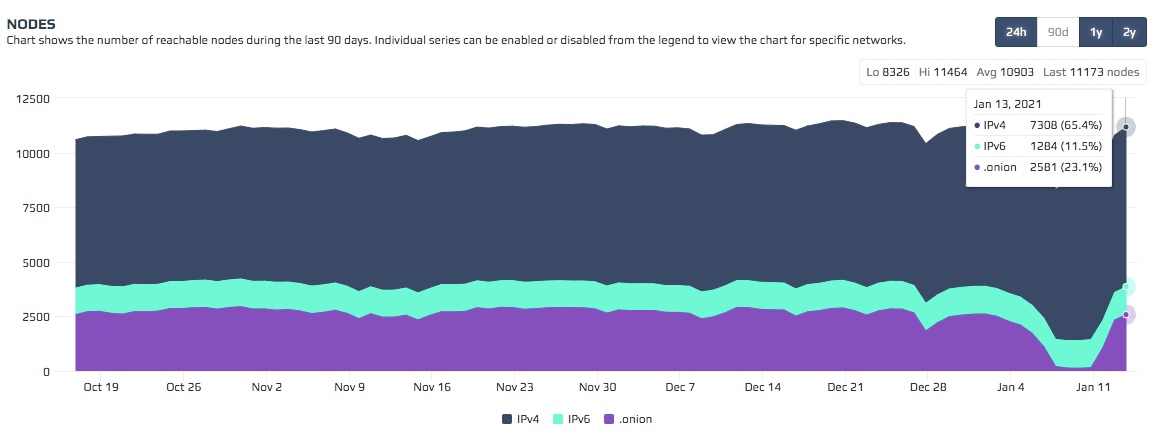 As per the recent info provided by node monitoring site Bitnodes, Tor based Bitcoin (BTC) nodes have resumed functioning after a total collapse earlier this year. At the end of January 13, the count of accessible Tor-based Bitcoin nodes was 2,581, an increase from just 122 nodes on January 9.
As per the recent info provided by node monitoring site Bitnodes, Tor based Bitcoin (BTC) nodes have resumed functioning after a total collapse earlier this year. At the end of January 13, the count of accessible Tor-based Bitcoin nodes was 2,581, an increase from just 122 nodes on January 9.
On the basis of data provided by Bitnodes, Tor-based Bitcoin nodes account for considerable portion of Bitcoin network, usually representing 25% of aggregate accessible running nodes. As per the latest recorded info, Tor-based nodes accounted for more than 23% of aggregate Bitcoin (BTC) nodes on January 13.
As per Bitnodes, the prevailing count of Bitcoin nodes was 11,190 nodes, an increase from roughly 8,300 on January 7. The Bitcoin (BTC) network has been systematically recuperating with respect to the number of operational nodes after a critical issue on the Tor network.
Bitcoin node is basically a computer linked to a group of computers to manage and harmonize a replica of the whole Bitcoin blockchain and basically ensure that the network is running without any issues. Tor enabled Bitcoin nodes, on the contrary, use anonymous Tor network.

The recent decline in Tor based Bitcoin nodes were probably created by a crash of the Tor network. On January 10, Tor Project revealed stability issues due to a bug in its V3 onion facility. Tech centered media outlet TechNadu claimed that the outage was due to an attack from a hacker.
The outage of the Tor network consequently impacted a huge number of Tor based or classed as “onion” websites, which includes cryptocurrency exchanges such as Bisq and Wasabi, and private Bitcoin wallets. Four days before, Wasabi revealed that it was able to provide its services without any issue using a fallback platform.
Tor is still having issues.
Mailbox messages may get lost, making it seem like a peer is unresponsive.
Please be patient and allow peers more time to respond than usual.
— Bisq (@bisq_network) January 10, 2021
Wasabi’s stated:
“If the Tor onion service of the backend becomes unavailable for the user, the wallet falls back to communicating with the backend’s clearnet endpoint, still over Tor.”








